Blog Archives
Home -
Posts tagged "Working Animals"
Greyhound racing is a cruel sport. Deaths, injuries and exhaustion are the norm. The animals’ natural
speed and abilities are harnessed in this nonconsensual sport that brings in millions for the industry
and sports fans, but ruins dogs’ lives. The sport is so hard on animals, that many US states and some countries have banned it . New Zealand is poised to be the latest country that bans greyhound racing. In Ireland, greyhound racing still receives 20 million every year in funding.
Every year, dogs die, grist to the mill. In 2024, the death toll of greyhounds at Irish race tracks
increased by 60%. 96 greyhounds were either euthanized or died of a racing injury on Ireland’s racing tracks between January and the end of June 2024 in Ireland. In previous years 60 animals were euthanized or died of a track-inflicted injury during the same time period. It’s an unacceptable amount of deaths in a “so-called sport” that is funded by taxpayer money.
It’s almost impossible to imagine a sport where humans frequently die or push themselves so hard
that they are too worn out to even retire after the sport. Of course we don’t euthanize humans
when they are no longer useful. And even the most demanding or dangerous human sports are
pursued voluntarily, whereas animals are engaged in sports without their consent.
A spokesperson for Greyhound Racing Ireland explained the deaths away as a result of an increase of
dogs being raced in the country. This only makes it clearer that greyhound racing is a sport that
sends dogs to their death.
Animal Welfare advocates have repeatedly criticized the Irish government’s funding of greyhound
racing. Greyhound racing receives more guaranteed funding than any other sport in Ireland. The
obvious conclusion from this is that greyhound racing is big business for the country: it’s easy money
for an industry that doesn’t have to pay its athletes or guarantee their welfare.
In even worse news for Irish greyhounds, Irish greyhounds are being exported to India to participate
in an incredibly cruel craze that involves racing greyhounds against motorbikes. This open animal
cruelty, known as “motorbike lure coursing” races dogs to exhaustion and exposes dogs to the
danger of being mangled in an accident.Just like humans, animals are capable of amazing physical feats. They enjoy testing their abilities, being competitive and playing with other animals. However unlike humans, they are forced to engage in sporting activities without their consent. Until we can communicate with animals to understand their needs and desires, involving them in sporting activities that are cruel
and punishing is not sport – it’s animal cruelty. At Freedom 4 Animals we believe that animal freedom demands that we consider animals as beings of equal significance, with equally valid needs, desires and agency. Read more about our educational programs and animal advocacy.
Please sign the petition to stop horse-racing in Ireland.
Spain’s new animal rights law has notable exceptions that teach us a lot about how people view animals.
Spain has made it illegal to leave pets alone. Wild animals have been banned from the circus and marine parks are not allowed to keep any new dolphins in captivity that haven’t already lived in the marine park for most of their lives. Pets can no longer be bought from pet-shops or online. Only licensed breeders can sell pets. Mandatory pet insurance and registration is also required.
One of the quirks of the law is that it leaves out certain animals that feature in cultural activities in Spain. Hunting dogs are excluded from the legislation after the hunting lobby fought for the exception. Bullfights are also left out of the legislation, despite being one of the cruelest sports involving animals.
Bullfighting involves stabbing a bull with lances to weaken the animal, then eventually killing the bull. The bull is led into the ring, greeted by a matador, then jabbed by picadors and usually killed by the matador. The “sport” consists of introducing an animal to an extremely stressful situation– a ring with a large cheering audience — baiting and disorienting the animal, wounding it, then killing it. It is an activity that animal rights activists have long fought against. It is losing favor with the public even in places like Spain where bullfighting is traditional. Leaving it out of a sweeping animal rights law is arbitrary and caters to humans, leaving animals to suffer.
The fact that these exceptions are left standing says a lot about how humans prioritize the beings who are worthy of dignity and protection. Working animals, lab animals or animals like invertebrates are often left out of animal rights laws. Animal protection is still a cultural exercise enacted by humans who feel a closer relationship with some animals than others due to tradition, culture and the extent to which humans recognize traits of themselves in the animal. Many of the provisions in Spain’s animal rights law have been welcomed by activists, but the law does not yet achieve the goal of animal rights, which is to treat animals as if they have equal rights to humans, and each other.
|
Tags: Animal Abuse,
Animal Cruelty,
Animal Equality,
Animal Neglect,
animal rights,
Animal Rights Law,
Bullfighting,
Hunting,
Kevin Boileau,
Pets,
Transhumanism,
Working Animals
Performing animals at the circus are held captive, forced to train and perform unnatural routines in front of crowds and to travel long distances in cramped conditions. Their lives are difficult, disorienting, uncomfortable and exposed. Wild animals often escape from the circus and there have been many cases of abuse and maltreatment.
Fortunately the days of performing animals at the circus are numbered. SoulUniverse circus has become the latest circus to drop performing animals from their routine, under pressure from animal rights activists, led by PETA. They join the list of circus companies who have moved beyond using animals like Lions, Bears, Tigers and Elephants. These include Ringling brothers and Barnum and Bailey circus,
Animal control officers had observed animals being mistreated or neglected at the UniverSoul circus. Big cats were locked in cramped cages all day, elephants and tigers were denied veterinary care and animals were often wounded and frequently attempted to escape.
“Exotic” animals are often forced to work to provide entertainment for humans. The circus is one of the contexts in which animals like big Cats, Elephants or Zebras are forced to work, but other examples include rides or at petting zoos. Larger animals are often made into a spectacle and kept in unnaturally cramped and restrictive conditions that are both physically and psychologically distressing. The concept of the circus should be one that revolves around fun, artistry and highly skilled human performers that choose to perform, not animals who don’t consent to be there.
If you’re visiting the circus with children, PETA has a list of animal-free circuses you can consult. (Please check to ensure all information is up to date). https://www.peta.org/wp-content/uploads/2021/06/animal-free-circuses-pdf.pdf
|
Tags: "Exotic" Animals,
Animal Freedom,
Animal Labor,
animal rights,
Bears,
Big Cats,
Circus Animals,
Elephants,
Kevin Boileau,
Lions,
Nazarita Goldhammer,
Tigers,
Working Animals,
Zebras
In an ideal world, mourning the death of any living being should not bring relief for their passing. When death brings relief because a being has been suffering unimaginably however, we are glad the suffering has passed out of the world, at least. Often, the suffering of any animal comes in the form of pain or illness. In the case of Tikiri, the 70 year old elephant, her suffering was a result of years’ of slavery and abuse. The 70 year old Tikiri the elephant came to the world’s attention due to her emaciated appearance at a religious festival in Sri Lanka. The animal was used in a parade for 10 days each year. She was photographed in a skeletal, emaciated state, apparently malnourished and exhausted by her job. The elephant would march for days at this festival while hungry, exhausted and at an advanced age. Her body was covered with decorations to hide her terrible condition. Tikiri had been a working animal all her life, and was forced to march, despite being “India’s oldest elephant.”
It’s easy to forget that “fun elephant rides” for tourists are the other face of animal slavery. If tourists and those attending religious festivals boycott attractions and entertainments based on elephant slavery, unnecessary suffering could be prevented. That way, Tikiri’s suffering could at least lead to some kind of justice for others’ like her.
https://www.cnn.com/2019/09/25/asia/emaciated-elephant-death-sri-lanka-scli-intl/index.html


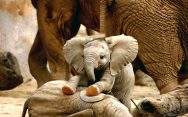
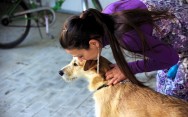

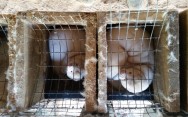
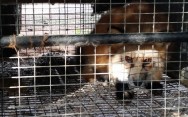
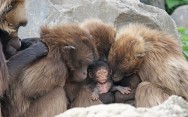
Social Media